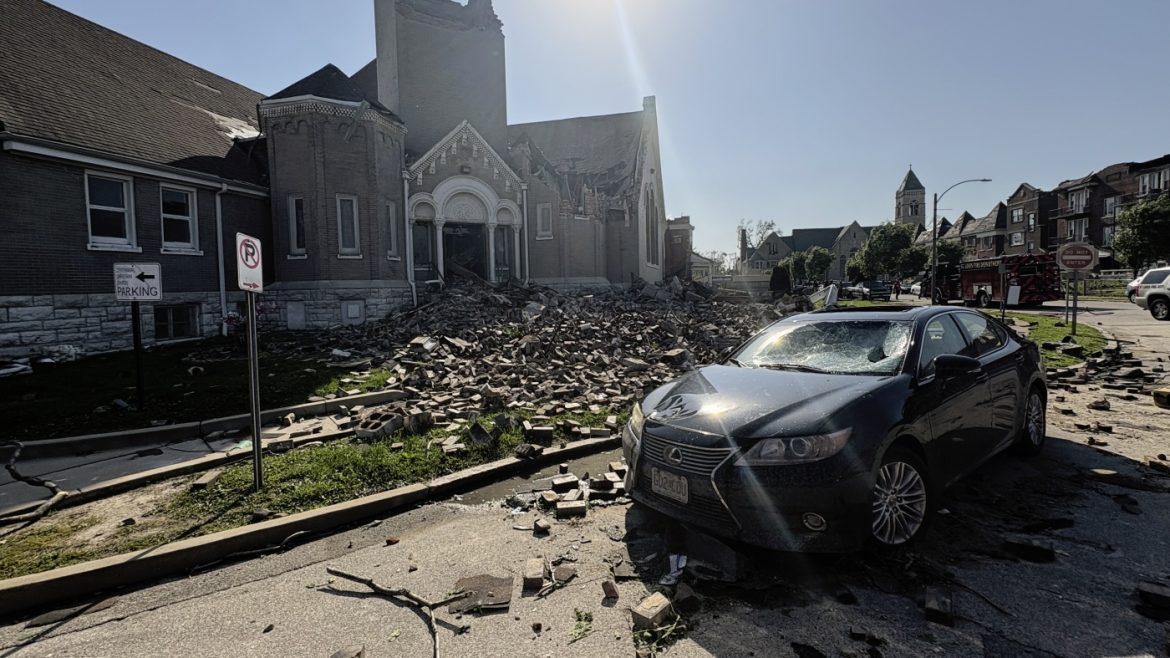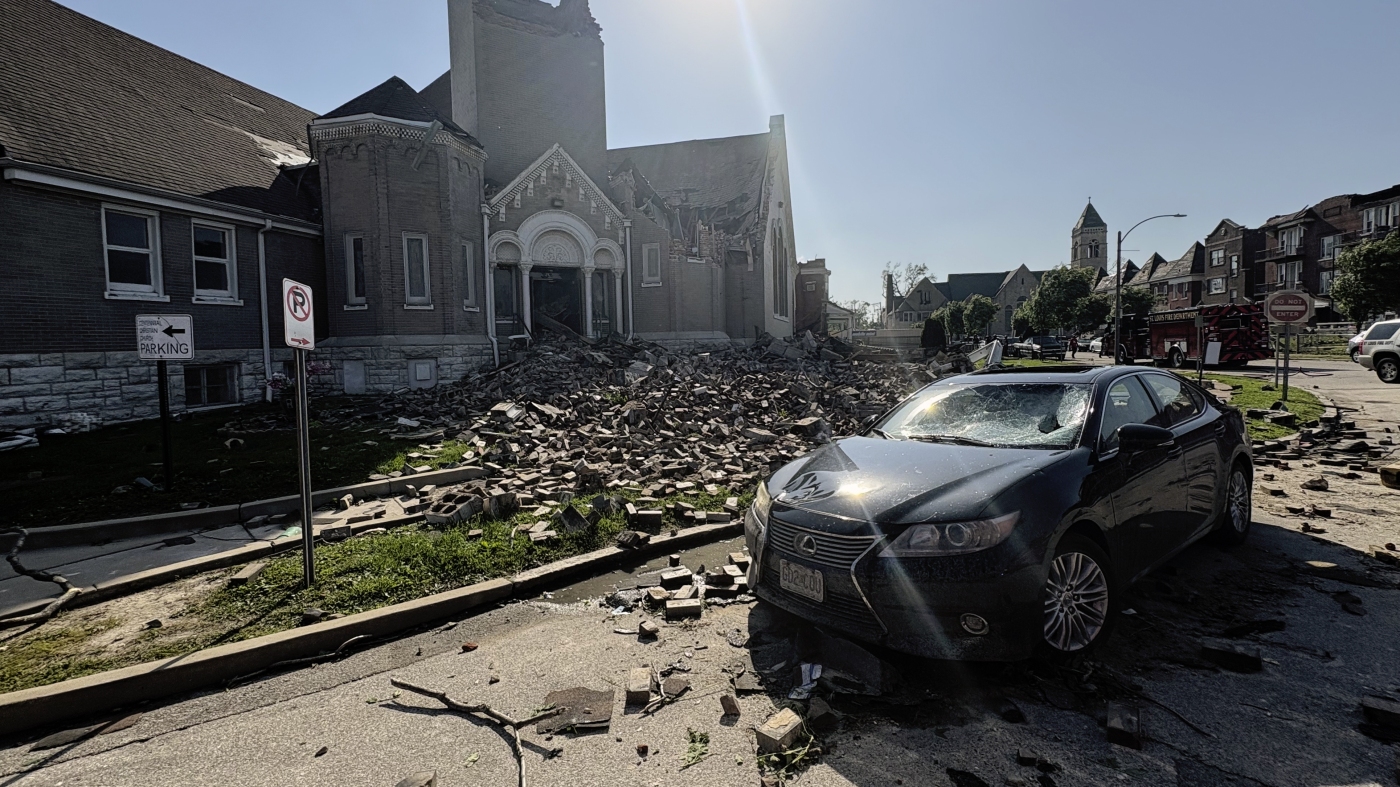Unrelenting Fury: A Deep Dive Into the Midwest Storms Devastation
The heartland of America was violently shaken by severe storms recently, leaving a trail of destruction and despair in their wake. With at least seven confirmed fatalities, thousands of homes and businesses damaged, and nearly half a million energy customers left powerless, the storms have posed significant challenges to communities across the Midwest. This analysis uncovers the events’ scope, the aftermath’s human and infrastructural toll, and the ongoing response and recovery efforts.
The Storm’s Harrowing Impact
The severe weather system unleashed on the Midwest primarily on a Friday and into the following days involved a complex combination of violent tornadoes, destructive wind gusts, and torrential rain. St. Louis, Missouri, bore a significant brunt, experiencing tornadoes potent enough to tear roofs off buildings, shatter windows, and uproot trees and power lines. The mayhem extended beyond Missouri, with Wisconsin also witnessing tornadoes, and the Great Lakes region suffering from widespread power outages.
At least seven deaths were reported in Missouri alone, with some sources indicating fatalities across multiple states including Arkansas, Oklahoma, Texas, Kansas, and Mississippi, pushing the broader death toll to over 30 in some accounts. Emergency responders conducted exhaustive search efforts, going building by building in affected areas to locate those trapped or injured, demonstrating the severity and widespread nature of the damage.
Power Outages and Infrastructure Damage
One of the gravest immediate consequences was the loss of electric power for nearly half a million customers. The storms’ intensity was such that they disrupted power grids, toppled transmission lines, and left many communities in the dark. This widespread outage further complicated rescue and recovery operations, as affected areas grappled with communication challenges and limited access to resources.
Beyond power infrastructure, the storms wrought extensive material damage. Houses and commercial properties suffered structural impairments, from blown-off roofs to damaged siding and compromised foundations caused by the ferocious winds. Trees snapped and debris scattered, hampering mobility and emergency access.
The Scale and Severity of Tornado Activity
Reports confirmed more than 60 tornadoes across 13 states, with several reaching EF-3 and EF-4 levels on the Enhanced Fujita scale, indicating severe to devastating damage potential. Particularly in Missouri, tornadoes devastated neighborhoods, contributing significantly to casualties and destruction. This level of tornado activity is indicative of a monster storm system, capable of wreaking havoc across multiple states simultaneously.
Dust storms and conflagrations added layers of disaster, as more than 100 wildfires intensified due to the storm-driven conditions, complicating the emergency response on the ground.
Human Toll and Community Response
The loss of life is tragically central to this phenomenon. While at least seven people were confirmed dead in the immediate storm impact zones, the broader fatalities connected to the overall storm system, including wildfires and storms spreading toward the East Coast, reached upwards of 40. Those figures underscore the tremendous human vulnerability during such catastrophic weather events.
Communities have taken up the difficult task of searching for survivors, providing aid to the injured, and beginning the clean-up and rebuilding process. Emergency management teams and National Weather Service storm survey groups are actively assessing damage severity, helping target aid and shaping future preparedness measures.
Wider Regional Effects and Forecasts
The storms did not limit their destruction to Missouri alone. Areas across the Midwest and South, including Texas and the Great Lakes region, suffered as the system moved eastward. Large portions of the populations were affected by heat waves following the storms, compounding recovery hardships. Additionally, subsequent events like derechos—a particularly destructive windstorm—have continued to pressure the already strained infrastructure and services in these regions.
Forecast teams continue monitoring conditions closely, anticipating further severe weather that could hamper recovery or introduce new threats.
Conclusion: Recovering From the Storm’s Wrath
These extraordinary Midwest storms represent a powerful reminder of nature’s unpredictable and destructive force. The combined effect of violent tornadoes, relentless wind, flooding rains, and resulting wildfires created a multifaceted disaster characterized by loss of life, widespread power outages, and massive property damage across multiple states.
Recovery will demand coordinated efforts among local authorities, emergency services, and communities. As search and rescue shift toward rebuilding, the need for enhanced preparedness and resilient infrastructure becomes evident. This tragic chapter underscores the necessity for ongoing vigilance and adaptive strategies to mitigate future disaster impacts in America’s heartland.


